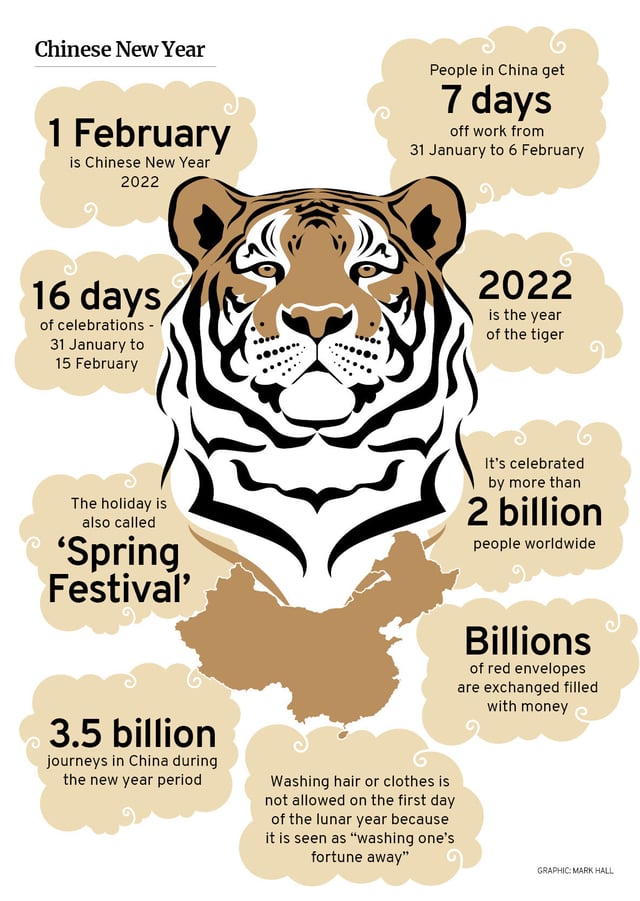Chinese New Year – Albert Cui
The 1. of February marks this year’s Chinese New Year, also known as Lunar New Year or Spring Festival, and the celebrations are as important as Christmas is for many of us. So let’s find out what makes Chinese New Year so special for our Chinese students.
Chinese New Year begins on the first day of the lunar calendar and is the most important holiday in China. From late January to early February, Chinese people are busy preparing for the New Year. They clean their houses to sweep away bad luck, have their hair cut and buy new clothes. People usually decorate doors and windows with red paper cuts, because red means good luck. These activities reflect the essence of traditional Chinese culture: removing the old and bringing in the new, defending against evil spirits and fighting disasters, worshipping the gods and ancestors, and praying for blessings during the New Year.
Children can get some new clothes or presents from their parents and grandparents. Jiaozi or dumpling are the most popular types of food. This festival is also a great time to catch up with family members who live far away and usually people travel great distances for Chinese New Year.
On New Year’s Eve the family always has a big dinner. Everybody watches TV and chats. There is a special TV show, also known as the Spring Festival Gala, which is watched by many families.
At midnight there are usually fireworks; although most recently they have been banned in some parts of China because of pollution.
On New Year’s Day people usually put on their new clothes and visit their family and friends. They usually say Happy New Year’s Day. The final day of the Spring Festival is marked by the Lantern Festival two weeks after. People usually eat a kind of rice dumpling called Yuanxiao. Eating this is said to bring good luck all year round.
















Post Comment
You must be logged in to post a comment.